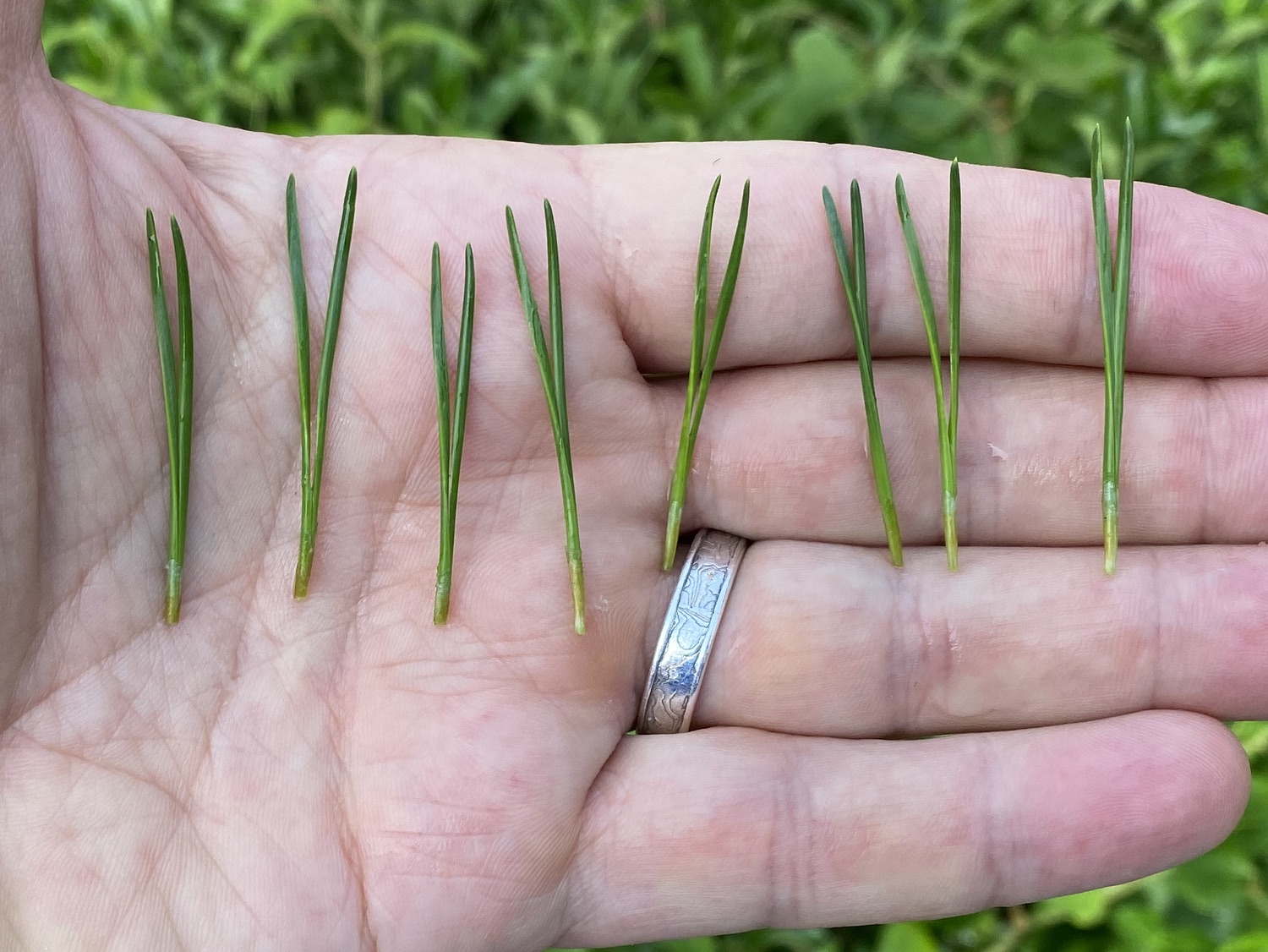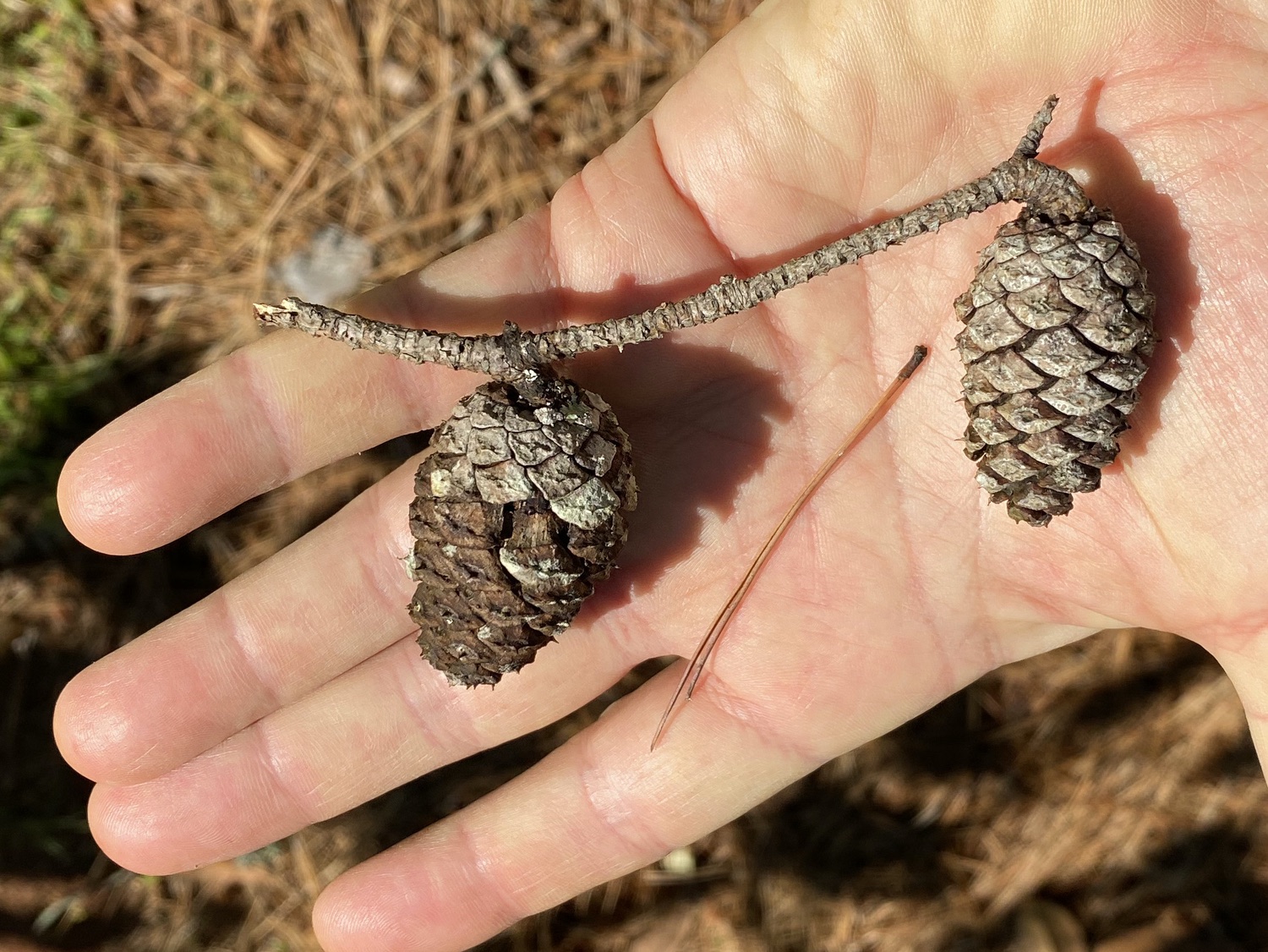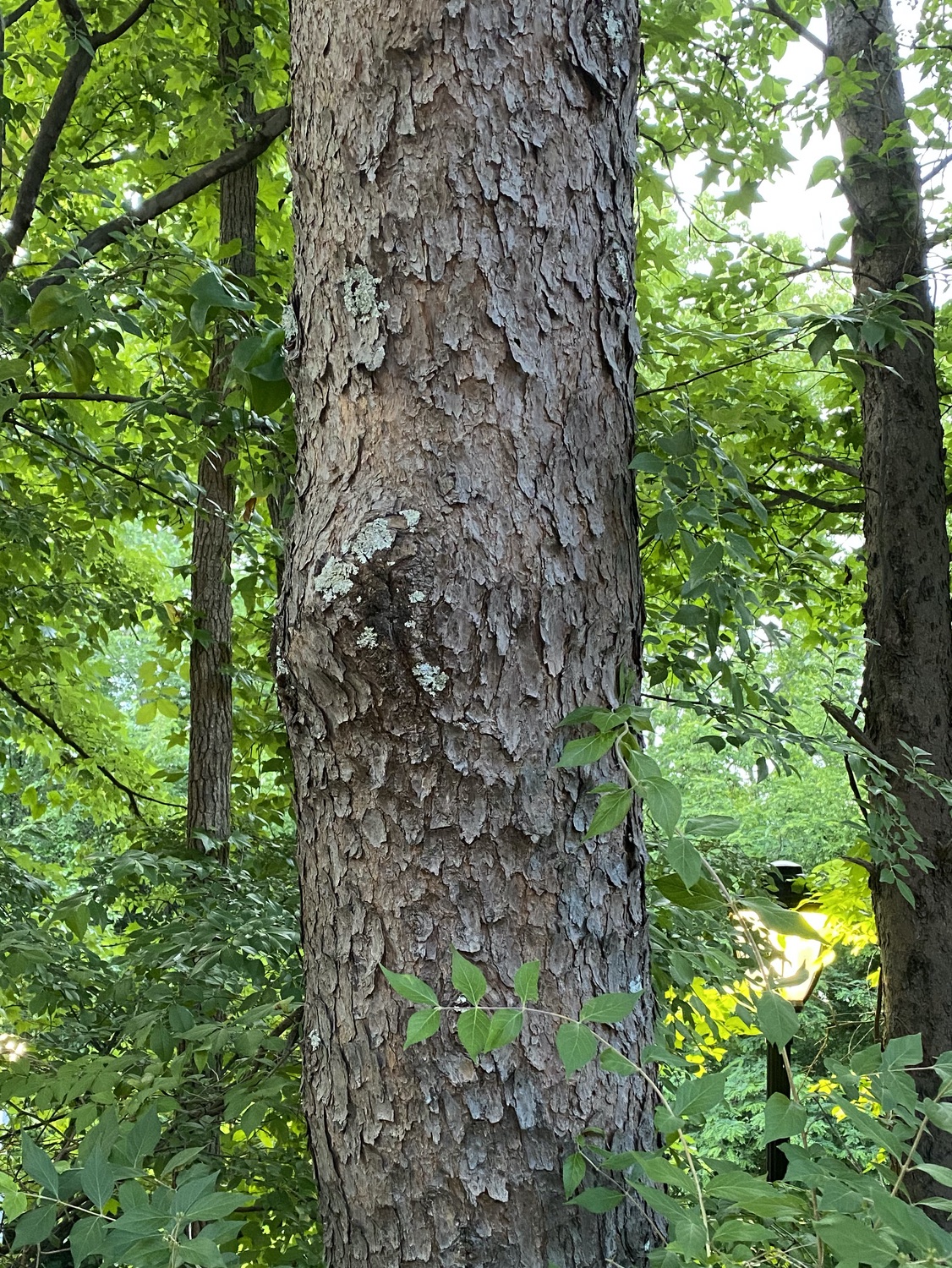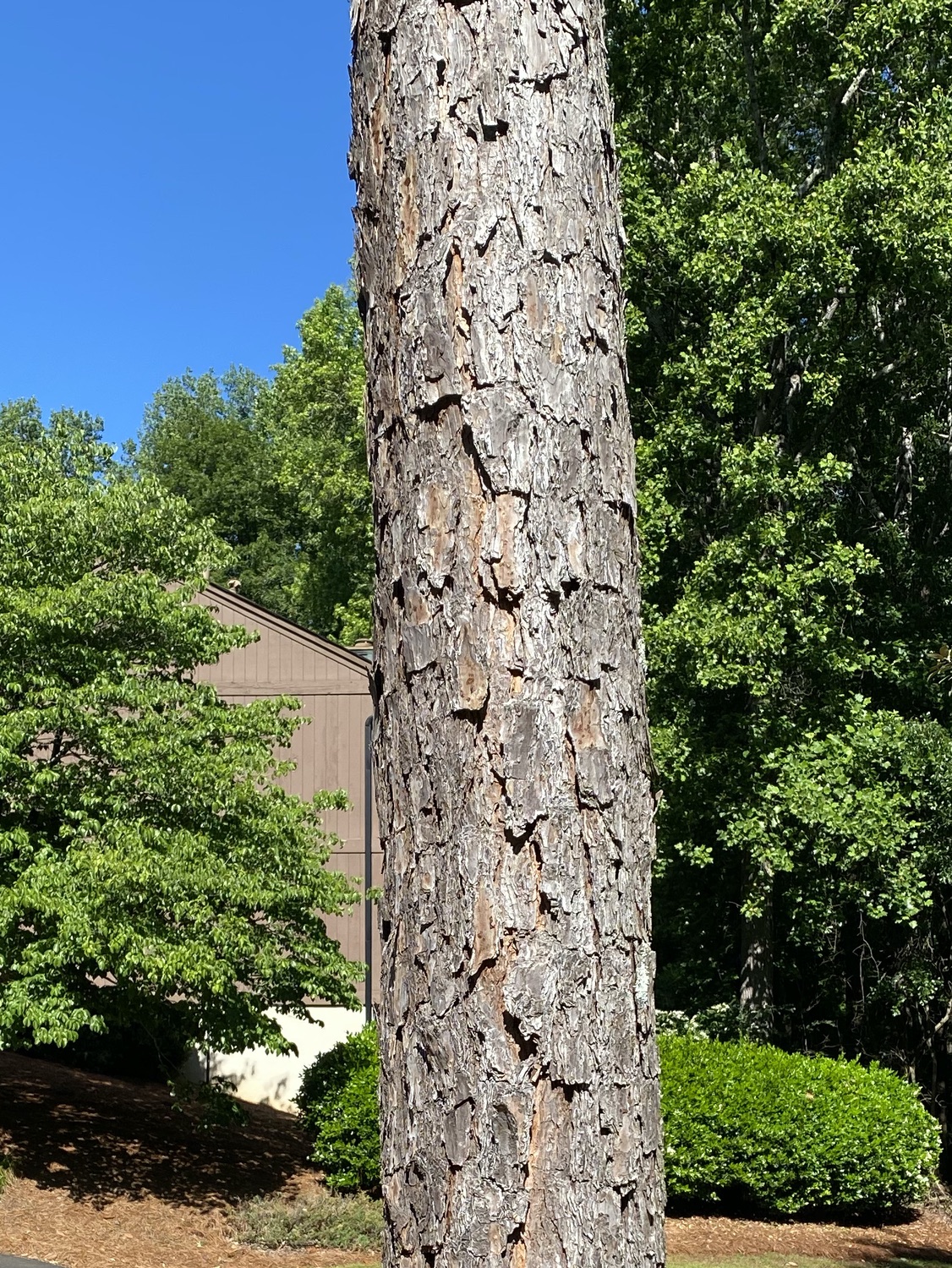TREES OF ATHENS: CONIFERS
5/16/20
We have four common native species of conifers in the Athens area. Three are pines (Loblolly, Shortleaf, and Virginia), plus the Eastern Redcedar, all of which are evergreen.
Eastern Redcedar (Juniperus virginiana). The foliage of juvenile trees is sharp and needle-like, but the mature foliage is rounded. Some trees are covered with small (3 mm) light-blue berries, which are used for making teas and flavoring meat when they are dark blue and mature (about 3 years). The bark is shaggy and fibrous, and the wood is red.
Eastern Redcedars prefer alkaline soils, although you can find them growing on acidic soils. The main bedrock of the Athens area is gneiss and lesser amounts of schist, both of which weather to acidic soils. Diabase dikes and amphibolite also occur in the area, although both are usually deeply weathered and rarely exposed. Both weathers to an alkaline soil and dense stands of Eastern Redcedar often indicate the presence of diabase dikes or amphibolite. Despite its name, the Eastern Redcedar is a juniper in the cypress family, as are all and “cedars” native to North America. True cedars are in the pine family and are native to Asia.
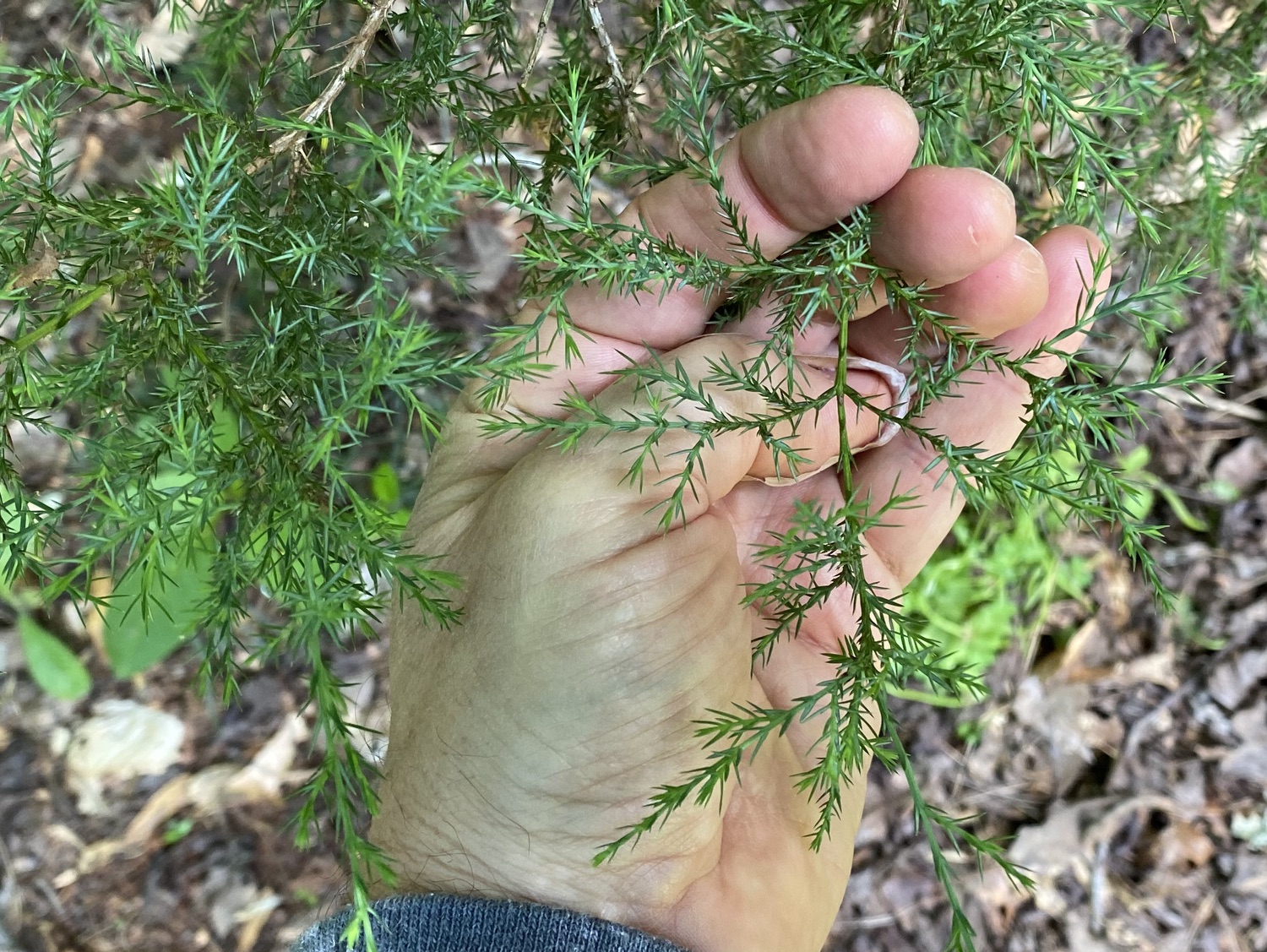
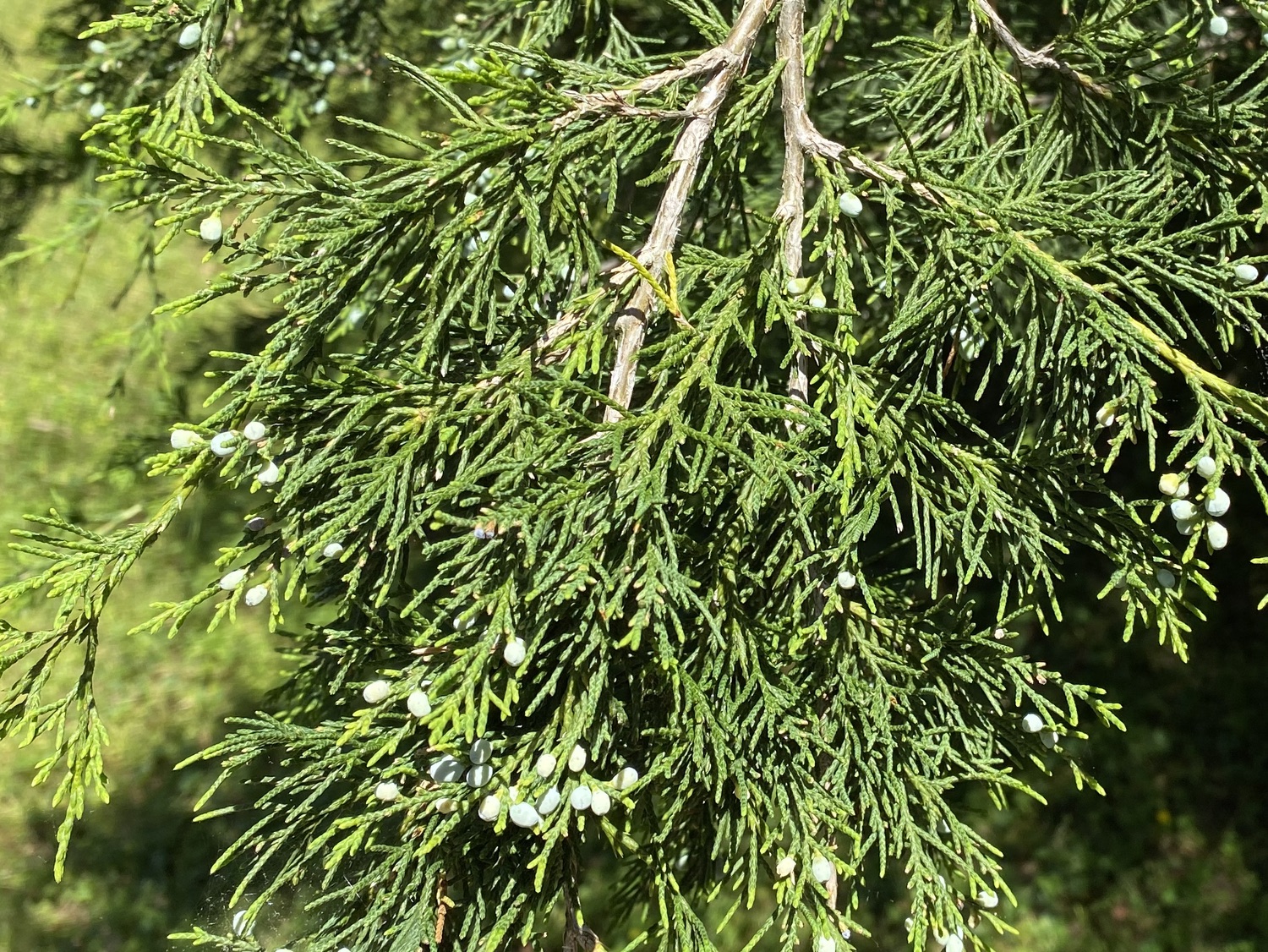
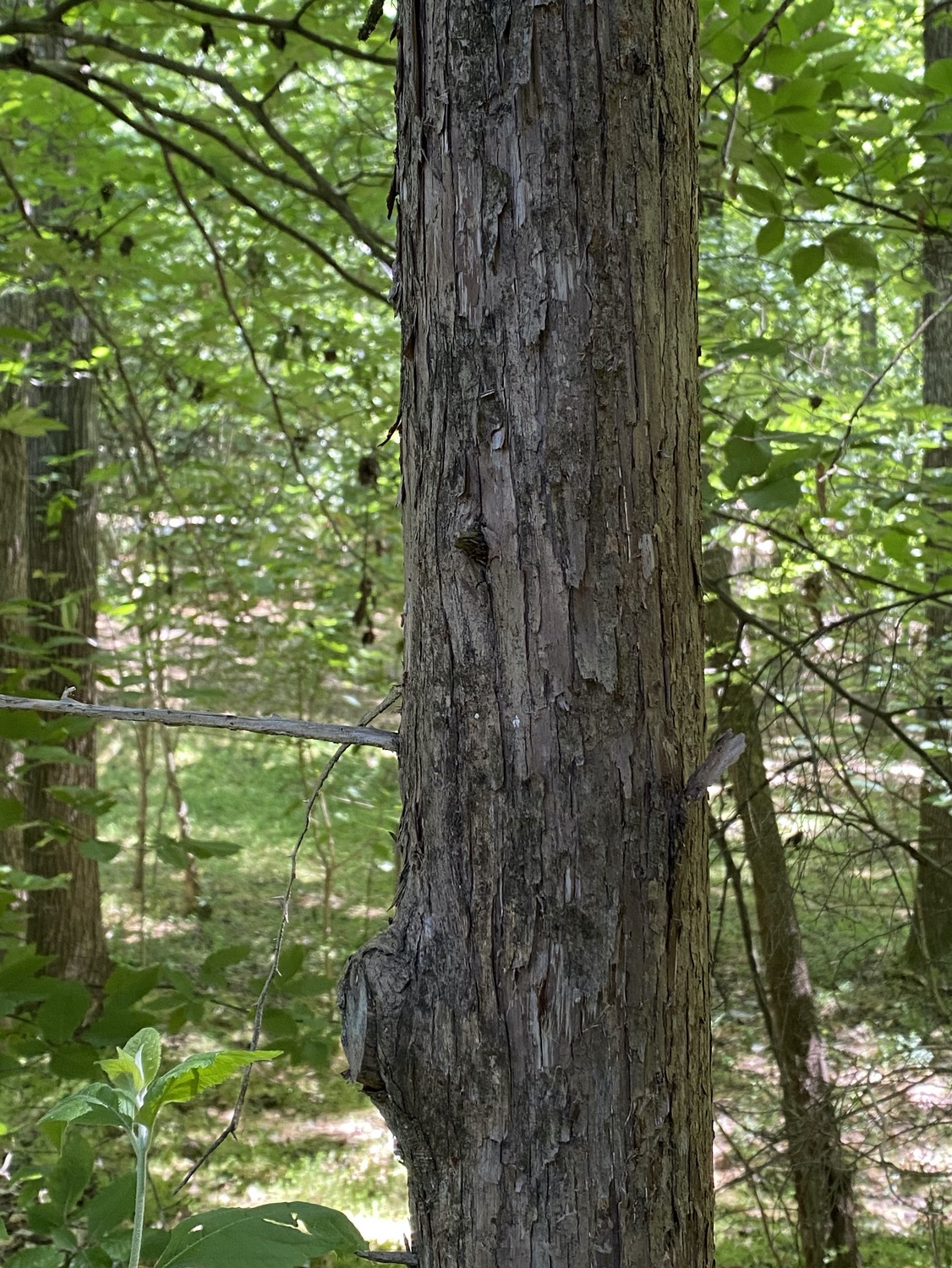
Pines
There are three common native pines in the Athens area, the Loblolly Pine, Shortleaf Pine, and Virginia Pine, in that order of abundance. One of the quickest ways to tell them apart is size: Loblolly has the longest needles and largest cones, Shortleaf is intermediate, and the needles and cones of the Virginia Pine are quite small. Bark is another good way of distinguishing the Loblolly and the Shortleaf, with the Loblolly having deep vertical fissures and the Shortleaf having thin peeling plates.
All of the pines prefer acidic soil, and the tend to be the first trees to grow in disturbed areas, so pine forests are common.
Loblolly Pine (Pinus taeda). Needles of the Loblolly Pine are long, almost as long as your hand (7"), and they usually come three to a bundle (with a range of 2–5). The cones are relatively large (3–4" long) and have stout prickles. The bark has long, deep, and continuous vertical fissures that become more pronounced as a tree grows.
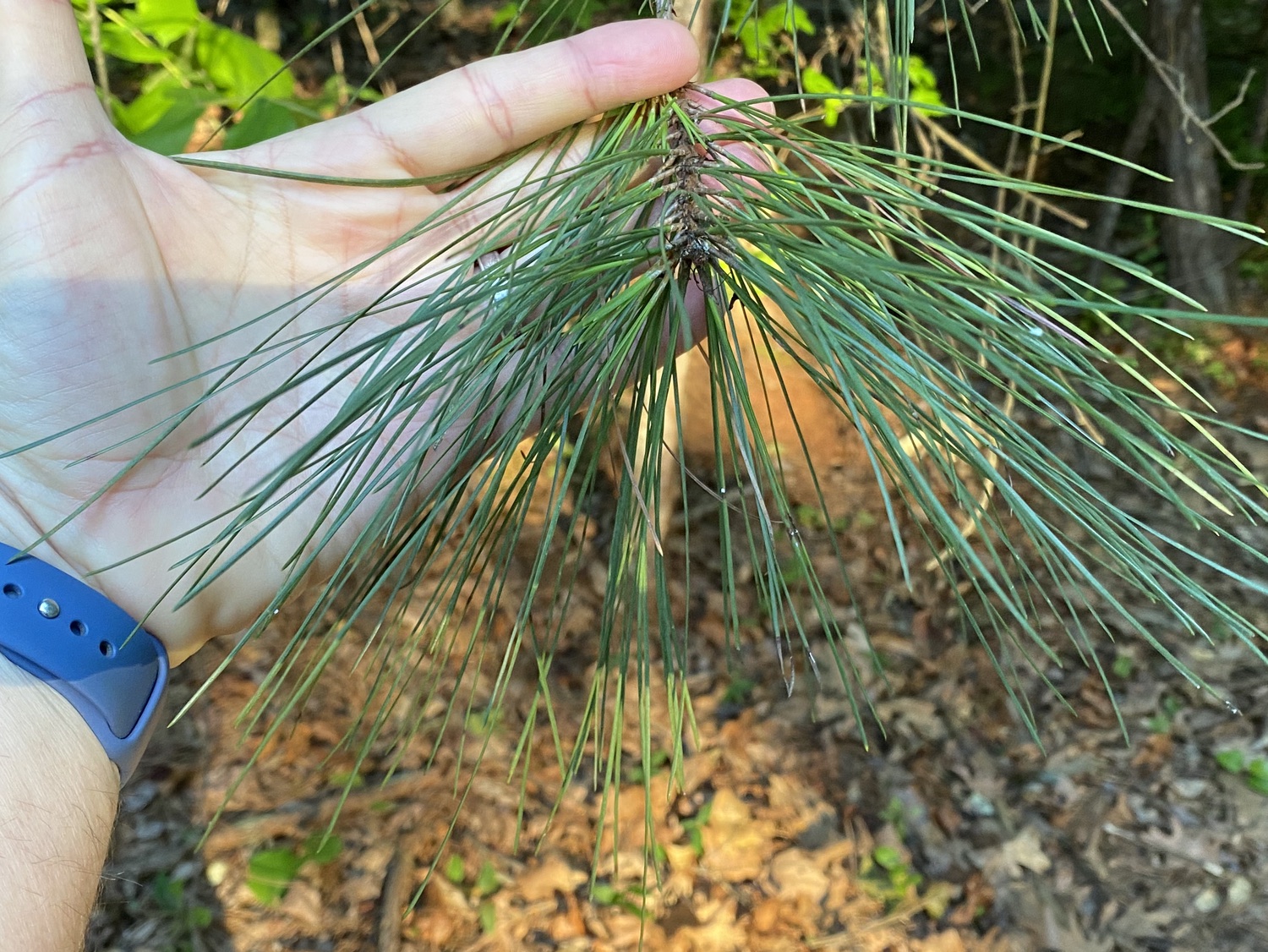
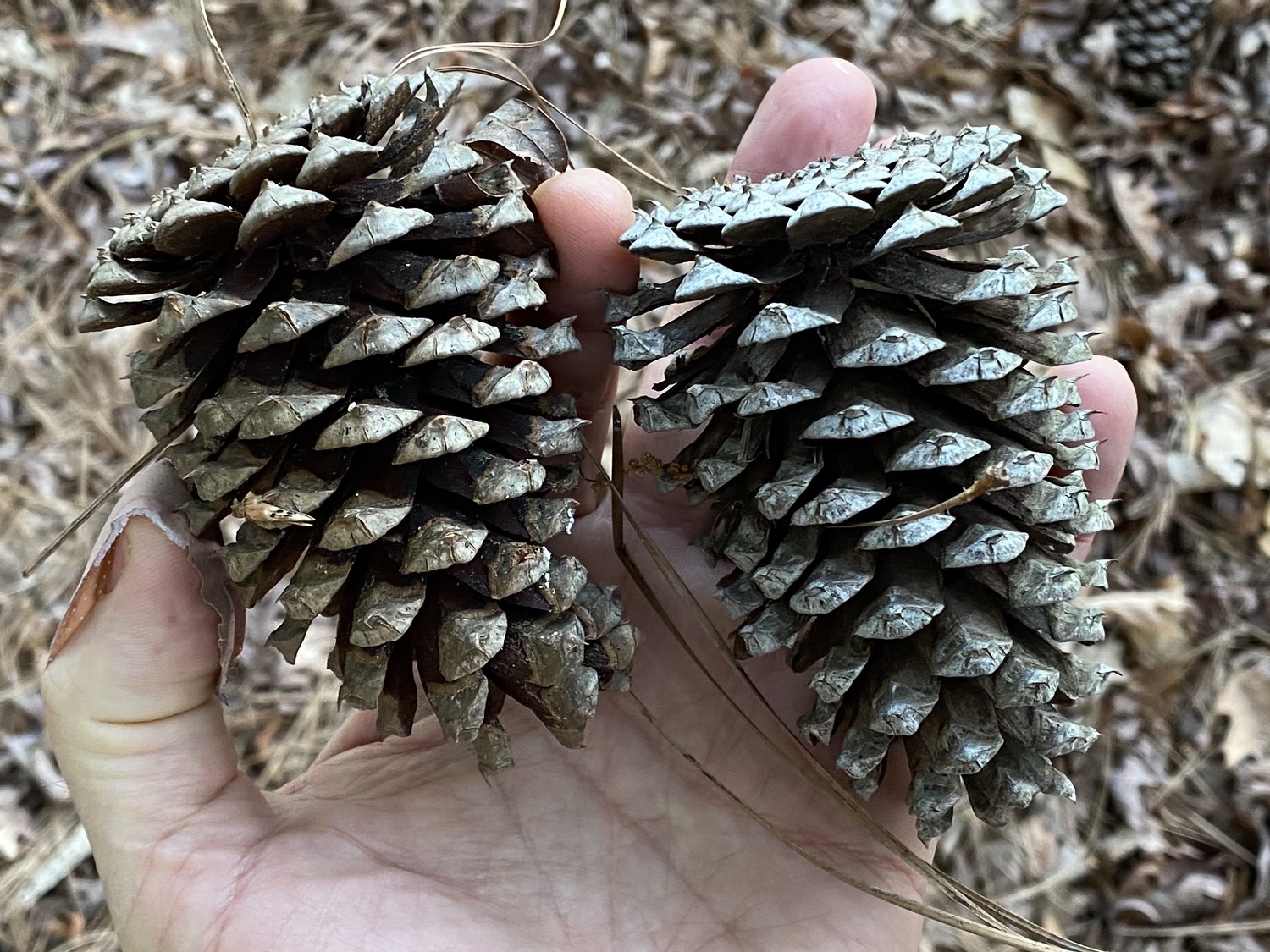
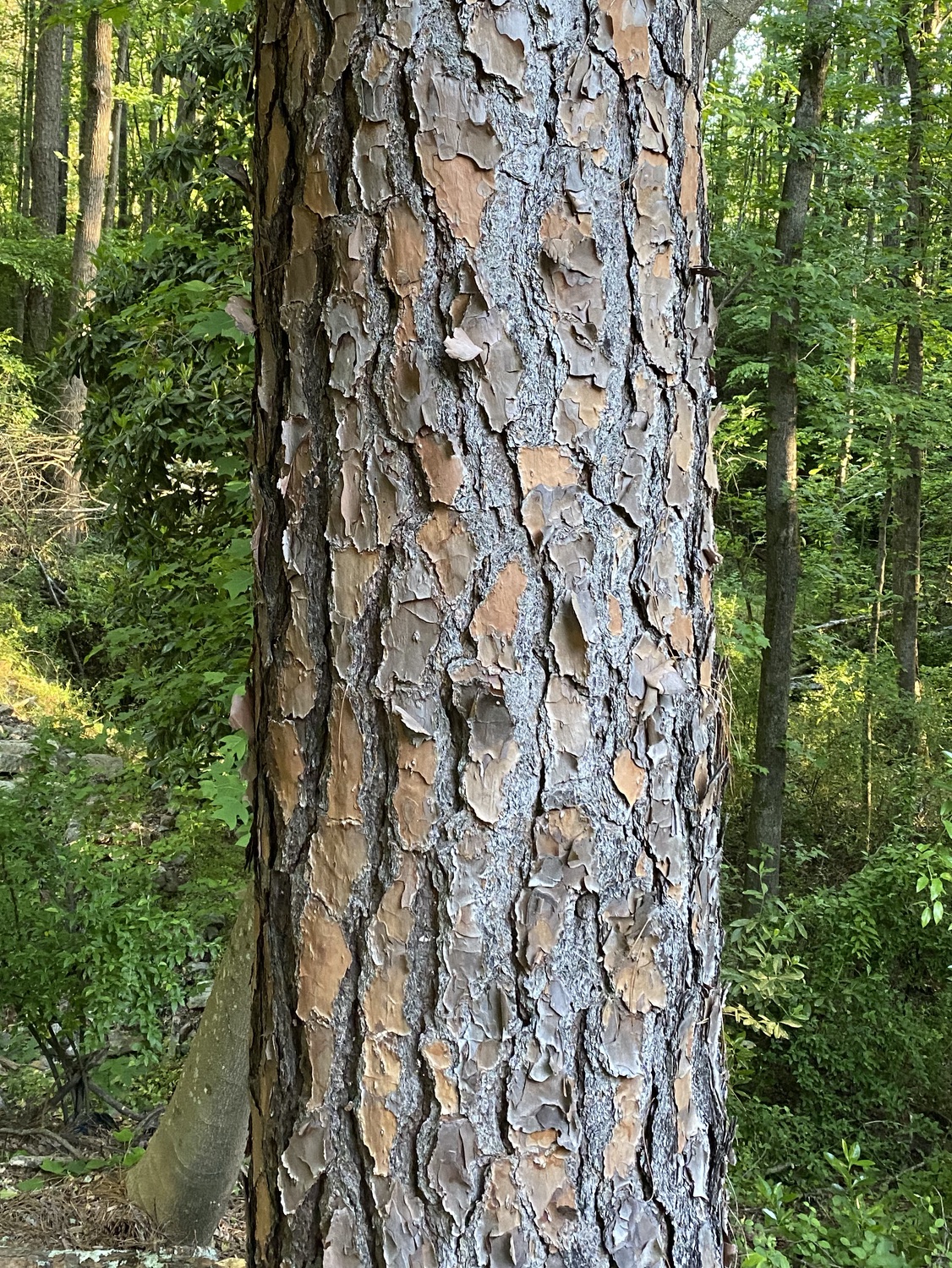
Shortleaf Pine (Pinus echinata). As you might have guessed, the eedles of the Shortleaf Pine are shorter, about as long as your fingers (3"), and come 2–3 to a bundle. The cones are also smaller (about 2" long). The bark is scaly, lacking the deep vertical fissures of the Loblolly Pine.
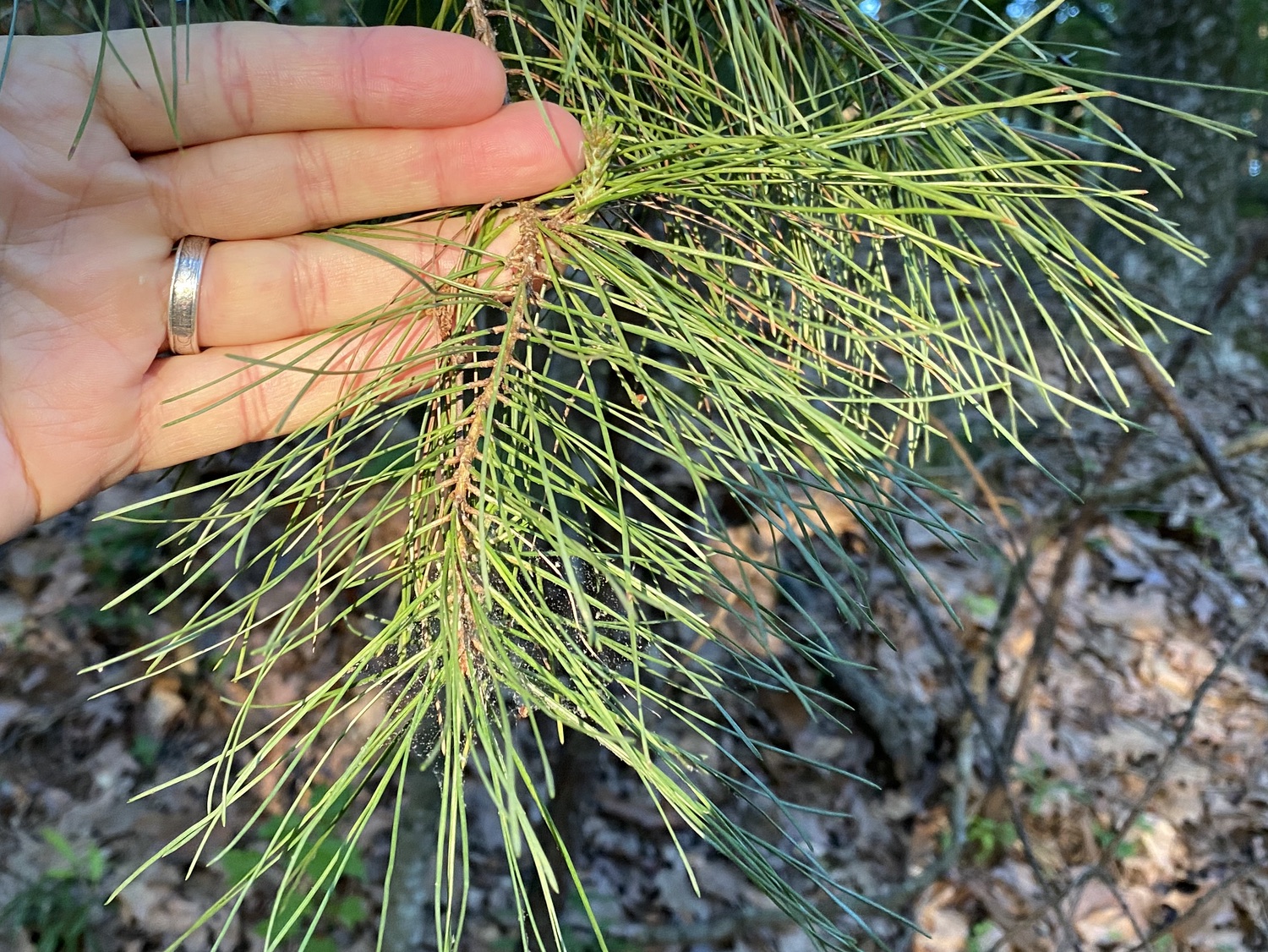
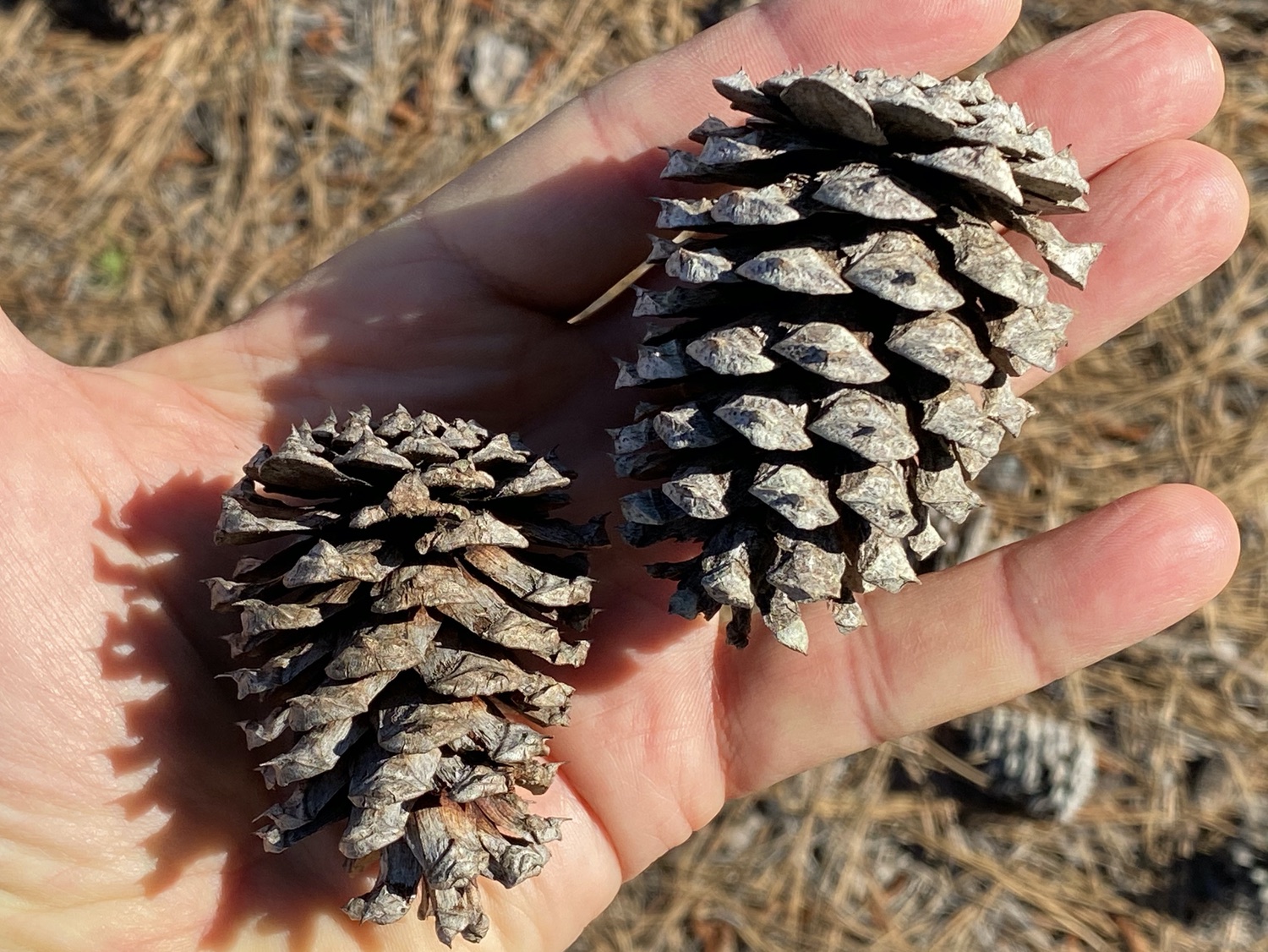
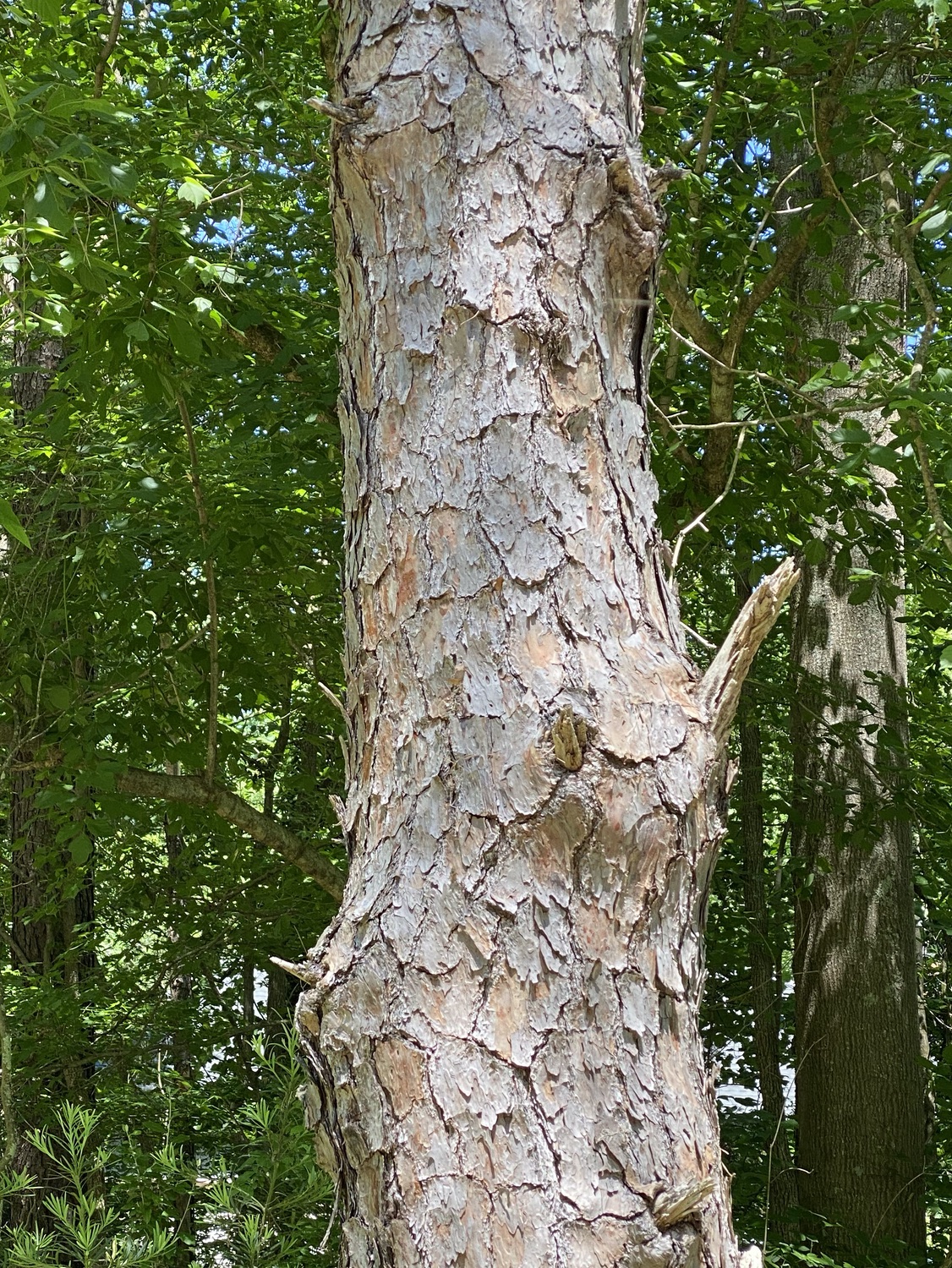
Virginia Pine (Pinus virginiana). The needles of the Virginia Pine are very short, about half the length of a finger (2"), twisted, and come two to a bundle. The cones are also small, about 1–1½" long. Virginia Pine is usually a small tree, and there are few around here, because we are near the southern limit of its range. The bark is scaly, making flatter plates on younger trees (middle photo) and quite rough plates on older trees (bottom photo).
